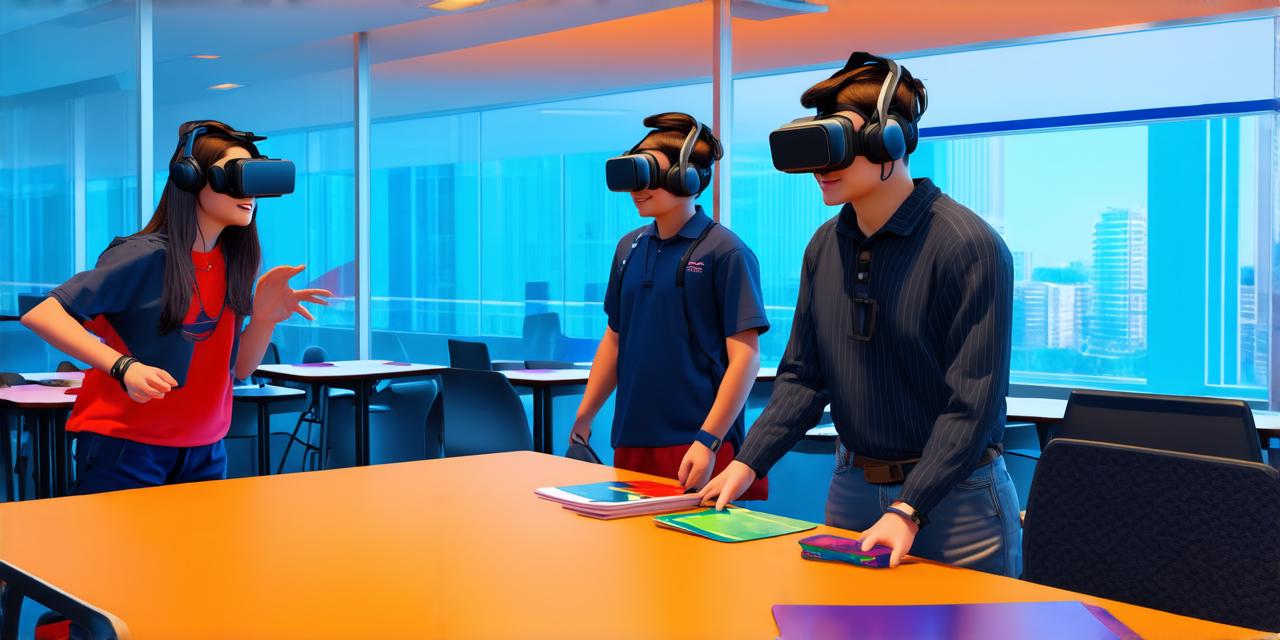1. Increased Engagement
Virtual reality provides an immersive experience that can capture students’ attention and make learning more enjoyable. By providing a realistic and interactive environment, VR can create a sense of presence that makes learning more engaging and memorable.
For example, a history teacher could use VR to take their students on a virtual tour of ancient Rome, allowing them to explore the city and its landmarks in a way that is not possible through traditional classroom methods.
2. Improved Retention
Research has shown that immersive experiences can improve memory retention. By providing a more engaging learning experience, VR can help students retain information better than traditional classroom methods. This is because VR allows students to interact with the material in a more meaningful way, which can lead to deeper understanding and retention of information.
3. Promote Active Learning

Virtual reality encourages active learning by requiring students to engage with the material in a hands-on way. For example, a science teacher could use VR to allow their students to dissect virtual specimens, providing them with a more interactive and immersive learning experience.
4. Foster Creativity and Innovation
Virtual reality provides a platform for students to explore and experiment in a safe and controlled environment. By allowing students to create their own virtual worlds, VR can foster creativity and innovation by encouraging them to think outside the box and come up with new ideas. This can help students develop the skills they need to succeed in a rapidly changing world.
5. Increased Accessibility
Virtual reality can provide educational opportunities to students who may not have access to traditional classroom settings. For example, a student living in a remote area could use VR to take a virtual tour of a museum or historical site, providing them with an education experience that they may not otherwise have had access to.
6. Personalized Learning
Virtual reality allows for personalized learning experiences that can be tailored to the needs and interests of individual students. By allowing students to choose their own learning path, VR can help ensure that they are engaged and motivated to learn.
7. Improved Collaboration
Virtual reality can facilitate collaboration between students by providing a shared virtual environment where they can work together on projects and assignments. By allowing students to collaborate in real-time, VR can help improve communication and teamwork skills, as well as promote a sense of community among students.
8. Cost Effective
Virtual reality can be a cost-effective alternative to traditional classroom methods, particularly for schools with limited resources. By providing an immersive learning experience that can be accessed from anywhere, VR can help schools save money on equipment and facilities while still providing students with a high-quality education experience.
9. Real-Life Applications
Virtual reality can provide students with real-life applications of the concepts they are learning. For example, a medical student could use VR to practice surgical procedures in a virtual environment, providing them with hands-on training that can be applied to their future careers. This can help students develop the skills they need to succeed in the workforce.
10. FAQs
Q: What are some examples of virtual reality used in education?
A: Virtual reality is being used in a variety of fields, including history, science, art, and language learning. Some examples include virtual field trips, virtual labs, virtual museum tours, and language learning programs.
